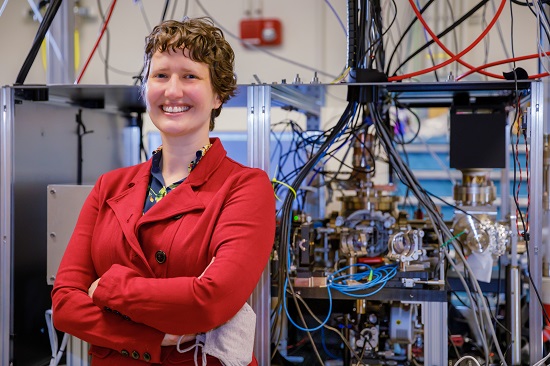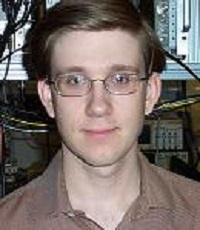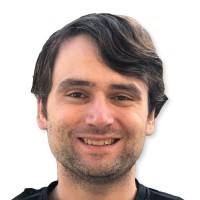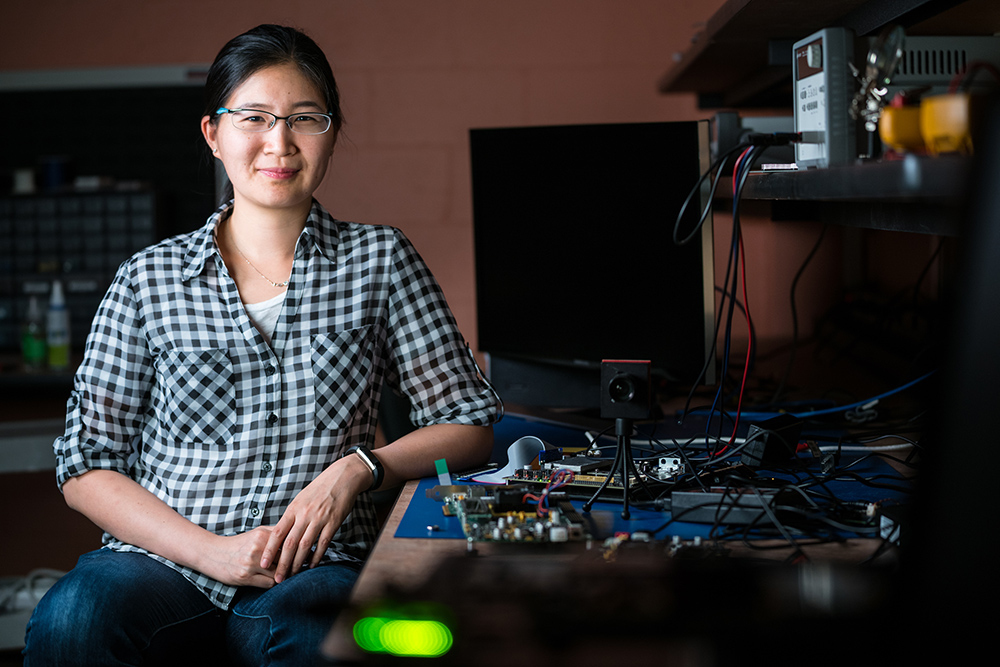QScout Quantum Computer from Sandia Labs Open for Research Business
By AI Trends Staff An open access quantum computing testbed from Sandia National Laboratories, called QScout, is now open to the public for research. Funded by a Department of Energy grant, the quantum computer can be used by scientists whose research proposals have been accepted, for no charge, a spokesman for Sandia stated to AI Trends in an email. Scientists from […]


By AI Trends Staff
An open access quantum computing testbed from Sandia National Laboratories, called QScout, is now open to the public for research.
Funded by a Department of Energy grant, the quantum computer can be used by scientists whose research proposals have been accepted, for no charge, a spokesman for Sandia stated to AI Trends in an email.
Scientists from Indiana University recently became the first team to begin using QScout, the Quantum Scientific Computing Open User Testbed.
“QScout serves a need in the quantum community by giving users the controls to study the machine itself, which aren’t yet available in commercial quantum computing systems. It also saves theorists and scientists from the trouble of building their own machines. We hope to gain new insights into quantum performance and architecture as well as solve problems that require quantum computation,” stated Sandia physicist and QScout lead Susan Clark in a press release.
The new testbed is made with trapped ion technology, Clark stated. In this approach, charged atomic particles called ions, can be confined and suspended in free space using electromagnetic fields. Qubits are stored in stable electronic states of each ion, and quantum information can be transferred through the collective quantized motion of the ions in a shared trap, according to an entry in Wikipedia. Lasers are applied to induce coupling between the qubit states (for single qubit operations) or coupling between the internal qubit states and the external motional states (for entanglement between qubits).
Most commercial quantum computing testbeds use superconducting circuits, which must be kept at ultralow temperatures, making them expensive to build and operate. The Sandia ion trap approach means the test bed can run at warmer temperatures.
Trapped ions also yield clearer signals than circuits and hold on to information longer, enabling scientists to perform different types of experiments and compare the two platforms, according to Sandia.
Trapped ions are held inside QScout in a so-called “trap on a chip,” a flat, bow tie-shaped device, about 2 cm (0.8 inches) long, overlaid on a semiconductor chip. Three electrically charged atoms of the element ytterbium are suspended in place by radio waves and an electric field above a hairline channel that runs down the center of the device. Lasers encode information in each ion as a qubit, comparable to a bit in a conventional computer, to perform calculations.
Sandia plans to expand the system from three to 32 qubits over the next three years, so scientists can perform more sophisticated tests.
Jaqal, for Just Another Quantum Assembly Language, is the programming language used to specify programs executed on QScout. A specification of Jaqal along with a summary of QScout 1.0 capabilities, example Jaqal programs, and plans for possible future extensions has been published in a paper from Cornell University.
QScout gives its users the ability to control as much or as little of the computer’s operation as they want to—even adding new or altered operations to the basic instruction set architecture of the machine. “QSCOUT is like a breadboard, while what companies are offering are like printed circuits,” stated Andrew Landahl, leader of the QScout software team, in a recent account in IEEE Spectrum. “Our users are scientists who want to do controlled experiments. When they ask for two quantum gates to happen at the same time, they mean it,” he stated.
In these early days of quantum computing, when it is still unclear how best to deal with major problems of noise, data persistence, and scalability, a quantum machine that does what you tell it to do has a role, the account suggests.
Jaqal was created to deliver on that combination of precision and flexibility, stated Landahl. Jaqal includes commands to initialize the ions as qubits, rotate them individually or together into various states, entangle them into superpositions, and read out their end states as output data.
Abstracts of Accepted QScout Proposals So Far
In addition to the scientists from Indiana University, researchers from IBM, Oak Ridge National Laboratory, the University of New Mexico and the University of California, Berkeley, have also been selected to begin experiments. Their projects range from testing benchmarking techniques to developing algorithms that could someday solve problems in chemistry too complex for normal computers.
Here are research abstracts about the accepted proposals that make up the first cohort of QScout users, sent to AI Trends in response to a query:

Philip Richerme, Indiana University, Simulating Proton-coupled electron transfer problems
The research will use the QScout testbed to simulate the quantum dynamics of proton-coupled electron transport (PCET) problems in quantum chemistry. In such systems, coupled proton-electron degrees of freedom may behave in a correlated fashion. As the number of these degrees of freedom grow, the complexity of the problem quickly renders itself classically intractable. By developing a mapping technique that will implement the appropriate ion-based qubit-qubit interaction, the PCET molecular quantum evolution will be simulated for the first time.
Raphael Pooser, Oak Ridge National Laboratory, Connecting high-level performance to low-level metrics using application-inspired benchmarking.
Linking applications performance to low-level metrics is a way to gain insight into future performance scaling, as quantum processors and the application size increase. This research aims to connect results from benchmarking noise extrapolation in the quantum control subsystem, and pulse-level optimal control, with performance of higher level applications including quantum chemistry and Grover’s search.
Petar Jurcevic, IBM, Holistic benchmarking using quantum volume.
The goal of this research is to investigate the total performance of a quantum system using a method pioneered at IBM called quantum volume. This method captures not only low-level errors, but also high-level errors that may only appear on the algorithmic level. This research will provide a baseline comparison between superconducting devices and ion-trap devices, investigate the effects of correlated noise on algorithmic errors, and further the understanding of the value of quantum volume technique.

Ryan Shaffer, Hang Ren, Hartmut Haffner, University of California, Berkeley, Exploring analog verification techniques for gate-based quantum devices
This research adapts verification protocols originally developed for analog quantum simulators, for use in quantum computers with continuously parameterized gates. It will use the QScout system to test these protocols and understand how they may complement more traditional characterization techniques such as randomized benchmarking. In particular, it will investigate whether such protocols can obtain additional useful information about noise sources affecting the system.
Tameem Albash, Elizabeth Crosson, Milad Marvian, University of New Mexico, Digital simulation of adiabatic evolution
This research will study a digitized simulation of an adiabatic evolution, which remains an important algorithm for ground state preparation. The interpolating Hamiltonian has enough flexibility to provide a wide range of adiabatic conditions, making it a suitable benchmark. The objective is to use this flexibility to improve practical implementations of digitized simulations as well as to be a sensitive probe of the noise on the QScout hardware.
Researchers interested in using the Quantum Scientific Computing Open User Testbed are invited to sign up for notifications by emailing QScout@sandia.gov. Sandia expects to select the next round of projects in the spring.
Sandia National Laboratories is a multi-mission laboratory operated by National Technology and Engineering Solutions of Sandia LLC, a wholly owned subsidiary of Honeywell International Inc., for the U.S. Department of Energy’s National Nuclear Security Administration. Sandia Labs has major research and development responsibilities in nuclear deterrence, global security, defense, energy technologies and economic competitiveness, with main facilities in Albuquerque, New Mexico, and Livermore, California.
Read the source articles and information in a press release from Sandia Labs, at the Quantum Scientific Computing Open User Testbed, and about Jaqal programs in a paper from Cornell University and in IEEE Spectrum.





































